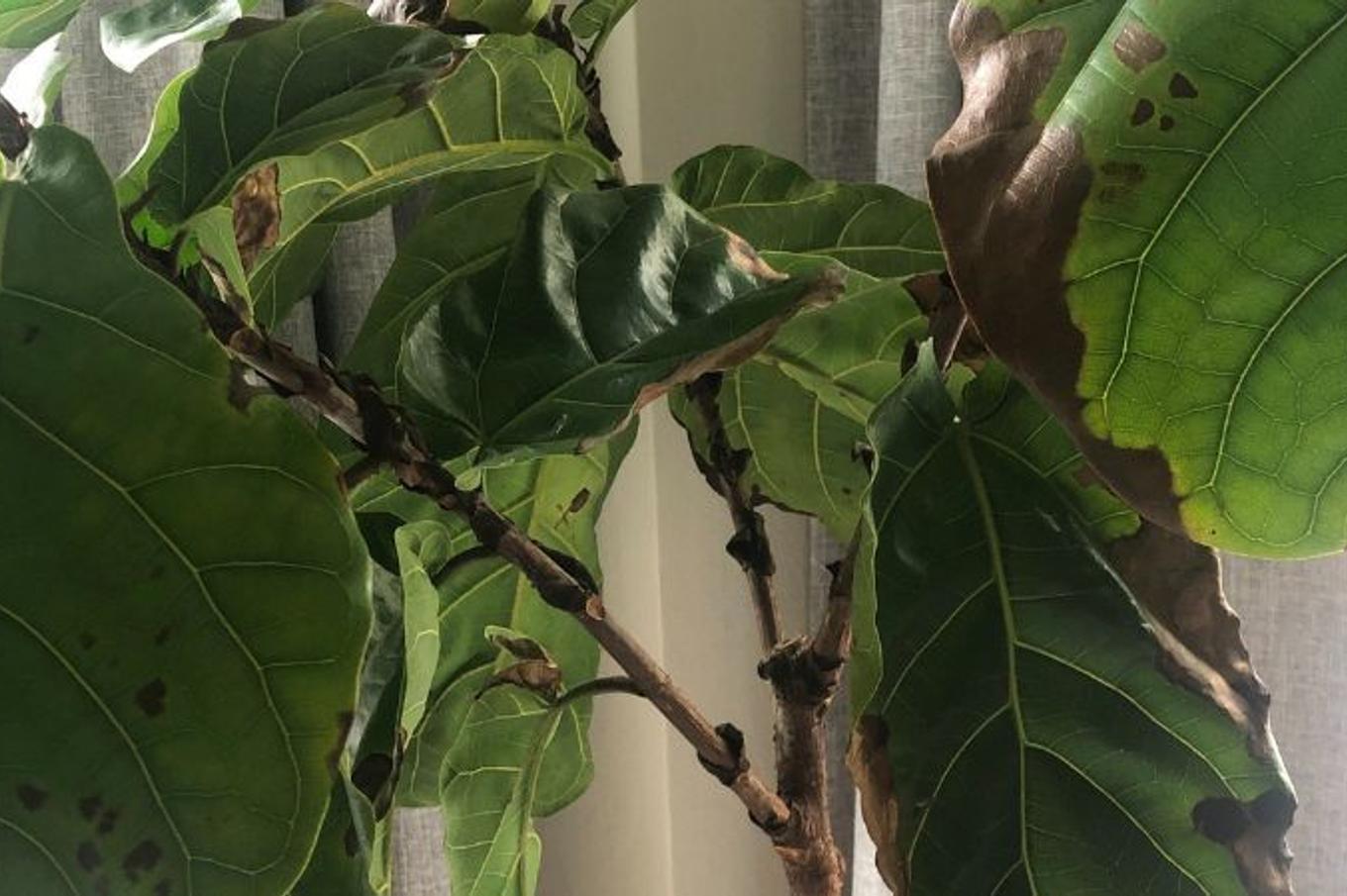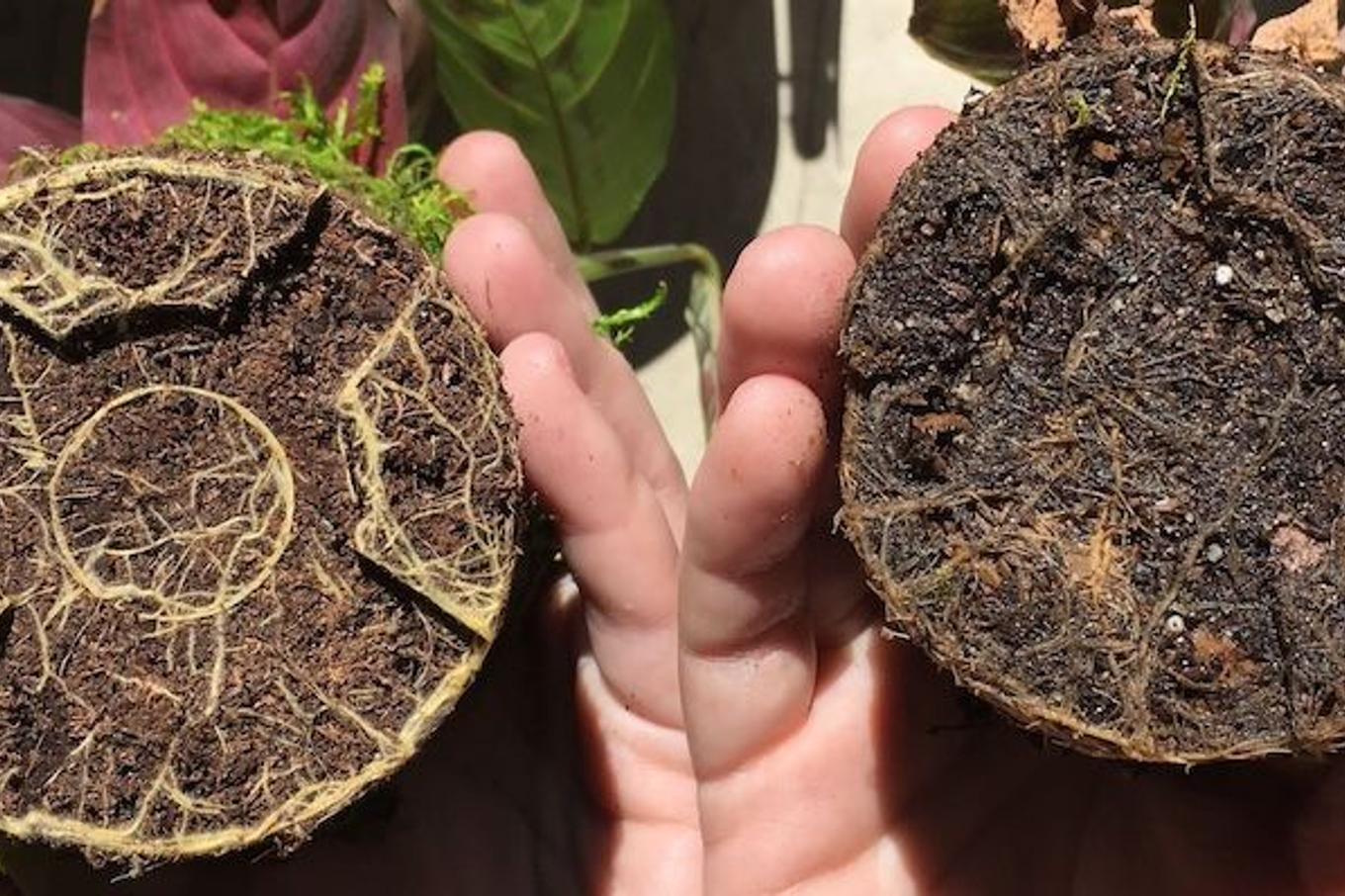Diagnosing & Treating Root Rot in Fiddle Leaf Figs

Root rot is one of the most common—and serious—issues faced by indoor plant owners. And when it comes to the popular Fiddle Leaf Fig, root rot can quickly go from a minor problem to a plant-killer if left untreated.
In this guide, we’ll cover what causes root rot in Fiddle Leaf Figs, how to diagnose root rot symptoms, and most importantly, how to treat and prevent it to keep your plant healthy and thriving.
What Is Root Rot?
Root rot is a fungal infection caused by excess moisture in the soil, typically from overwatering or poor drainage. Like many indoor plants, Fiddle Leaf Figs prefer to dry out slightly between waterings. When they sit in consistently soggy soil, the roots begin to decay—and the damage will eventually show above the soil in the form of browning leaves, yellowing, or sudden leaf drop.
Root rot can also develop if your pot lacks proper drainage or if you’re using a soil mix that retains too much water.
Common Causes of Root Rot in Fiddle Leaf Figs
- Overwatering or watering too frequently
- Poor drainage or pots without drainage holes
- Heavy, compacted, or water-retentive soil
- Humid conditions with inadequate airflow

How to Diagnose Root Rot in a Fiddle Leaf Fig
Root rot can be hard to spot early on, as it begins below the surface. Even if the soil appears dry on top, the roots may be rotting underneath.
If your Fiddle Leaf Fig is dropping leaves, showing brown spots, or looks generally unhappy, it’s time to take a closer look. Gently remove the plant from its pot and inspect the roots.
Here are some of the tell-tale signs of root rot in Fiddle Leaf Figs:
- Roots are brown, mushy, or slimy
- Soil is soggy or waterlogged, even days after watering
- A foul, musty smell around the base of the plant
- Leaves turning brown or falling off suddenly
How to Treat Root Rot in Fiddle Leaf Figs
The good news? Root rot doesn’t always mean your Fiddle Leaf Fig is beyond saving. But acting quickly is essential. Here's a step-by-step guide to treating your Fiddle Leaf Fig for root rot:
- Remove the plant from its pot and rinse the root system thoroughly with water.
- Trim away all damaged roots using clean scissors or pruning shears. Only keep firm, white, or tan-colored healthy roots.
- Repot your plant into a clean container with proper drainage and fresh, well-draining potting soil. Add gravel or perlite at the bottom if needed to improve airflow and prevent water buildup.
- Place your plant in bright, indirect light and water lightly just once.
- Let the soil dry out completely before watering again—this may take 1 to 2 weeks or longer depending on conditions. Use a moisture meter or your finger to test soil dryness at the bottom of the pot.
Pro tip: Err on the side of underwatering while your plant recovers. Overwatering again can undo your progress.
Aftercare: Helping Your Fiddle Leaf Fig Recover
It’s normal for your plant to lose a few more leaves as it adjusts. You can gently trim away heavily damaged or browning leaves, but avoid removing more than 30% of the foliage to reduce shock.
With the right care—light, airflow, and patience—your Fiddle Leaf Fig can bounce back from root rot and continue to grow strong and tall.
Sources
This article was written in collaboration with Claire Akin of the Fiddle Leaf Fig Plant Resource. Visit their website for more in-depth tips on Fiddle Leaf Fig care.













